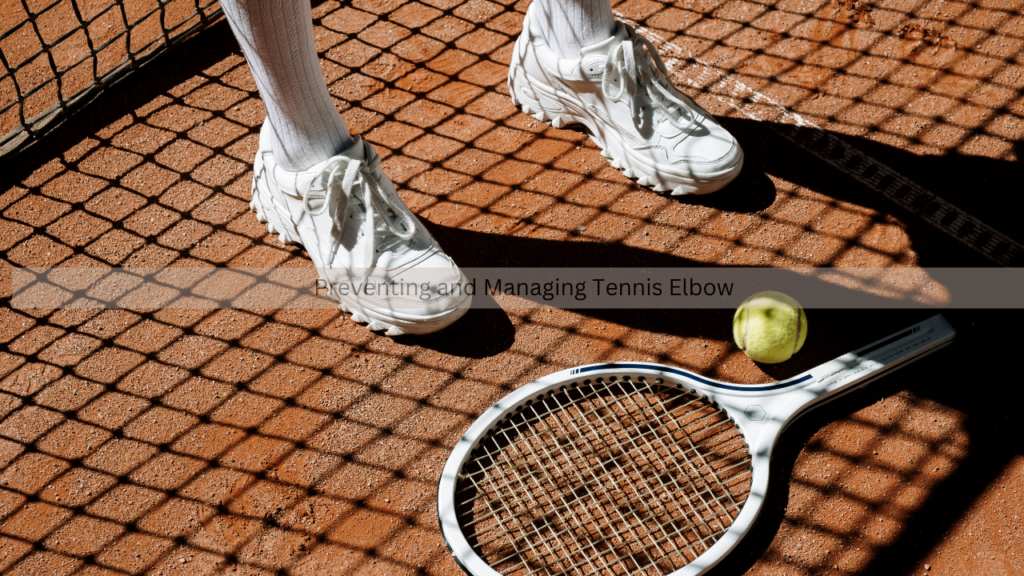
Tennis elbow, or lateral epicondylitis, is a common condition affecting athletes, particularly tennis players, but also those in other sports and professions that involve repetitive arm movements. It results from inflammation of the tendons that attach to the outer elbow, causing pain and discomfort. Proper prevention and management strategies are essential for athletes to continue performing at their best and to avoid long-term damage.
Understanding Tennis Elbow
Tennis elbow occurs due to repetitive strain on the elbow, leading to microtears in the tendons. While it’s commonly associated with tennis, it can also affect anyone who performs repetitive tasks involving gripping and twisting, such as in sports like badminton, golf, or even in activities like painting or typing.
Prevention Strategies
- Proper Technique and Equipment: Ensuring proper technique is crucial in preventing tennis elbow. Athletes should work with coaches to refine their strokes and reduce excessive strain on the elbow. Additionally, using the right equipment, such as a racket with proper grip size and tension, can significantly decrease the risk of injury. Racket vibration dampeners may also help.
- Strengthening and Flexibility Exercises: Incorporating strengthening and flexibility exercises into the training regimen can help protect the elbow. Focus on exercises that target the forearm muscles, such as wrist extensions and flexions, and incorporate stretches to maintain flexibility. Strengthening the shoulder and upper arm muscles can also help reduce strain on the elbow.
- Warm-Up and Cool-Down: A thorough warm-up before playing and a proper cool-down after can reduce the risk of injury. Warm-ups should include dynamic stretches and gradual increases in intensity, while cool-downs should involve static stretching to maintain muscle flexibility and aid in recovery.
- Rest and Recovery: Adequate rest is vital for preventing overuse injuries. Athletes should listen to their bodies and take breaks when needed. Overtraining can exacerbate the risk of developing tennis elbow, so incorporating rest days and avoiding excessive repetition is crucial.
Managing Tennis Elbow
- Rest and Ice: The initial treatment for tennis elbow involves rest and ice therapy. Resting the affected arm and applying ice packs can help reduce inflammation and alleviate pain. It’s important to avoid activities that exacerbate the condition.
- Anti-Inflammatory Medications: Nonsteroidal anti-inflammatory drugs (NSAIDs) can help manage pain and inflammation. However, these should be used under the guidance of a healthcare professional to avoid potential side effects and to address the root cause of the problem.
- Physical Therapy: Engaging in physical therapy can be highly effective in managing and rehabilitating tennis elbow. A physical therapist can design a customized exercise program to strengthen the forearm muscles, improve flexibility, and promote proper movement patterns. They may also use techniques such as ultrasound therapy or massage to aid in recovery.
- Bracing: Using a forearm brace or a tennis elbow strap can help reduce strain on the tendons and alleviate pain by distributing pressure away from the affected area. This can be particularly helpful during physical activities and daily tasks.
- Gradual Return to Activity: Once the pain and inflammation have subsided, athletes should gradually return to their sport or activity. This involves slowly increasing intensity and volume to prevent re-injury. Consulting with a coach or physical therapist can ensure a safe and effective return to full activity.
Conclusion
Preventing and managing tennis elbow requires a combination of proper technique, equipment, exercise, and recovery strategies. By incorporating these practices, athletes and coaches can reduce the risk of developing tennis elbow and effectively manage it if it occurs. Early intervention and a proactive approach are key to maintaining long-term athletic performance and overall health.